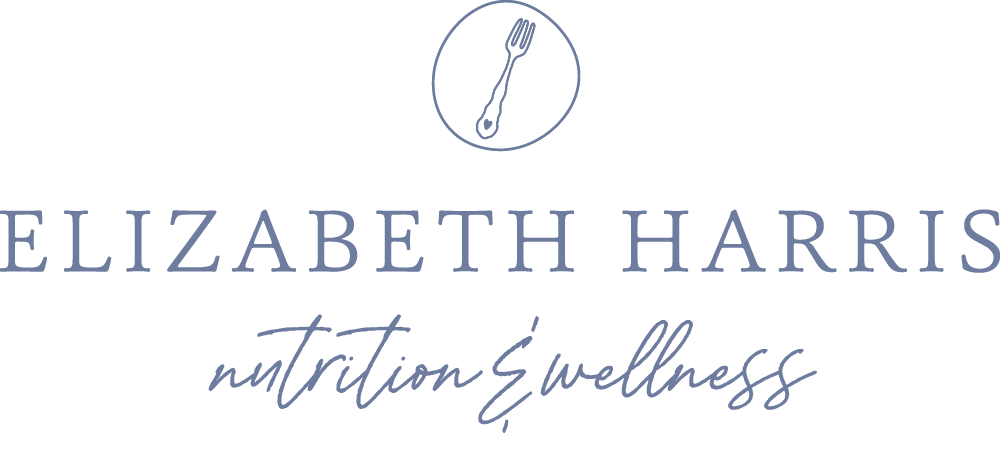3 Key Ways to Balance Your Meals
For most people, the basic tenets of gentle nutrition are rather straightforward: adequate intake, balance, variety, moderation, and pleasure.
Of course, the health-promoting benefits of individual foods are important too. But typically, if the other nutritional tenets are being met, we’re already getting many health benefits from specific foods. From there, we can make nutrition fun by ADDING foods to support our individual needs, stage of life, and uniquely personal considerations.
Straightforward doesn't necessarily mean easy, though, so today let’s zero in on just one of these basic principles: Balance. It comes up a lot in my coaching sessions with clients, so I want to share 3 ways you can think about and practice nutritional balance.
Tip #1: Balance Your Plate
Balanced plates are important because they help ensure we’re getting the right mix of macro- and micronutrients in our diet to support healthy growth or aging, immune function, and more. Plus, balanced meals help regulate our blood sugar and energy levels.
To balance your plate, be sure to include a good mix of protein, carbs, fruits and veggies, and some healthful fat at most meals. When it comes to snacks, here’s a quick tip: try to include at least 2 of the 3 macronutrients, which are carbs, protein, and fat. So, for example, you could pair fruit and nuts or nut butter, cheese and crackers, whole grain toast topped with avocado slices or peanut butter, yogurt and fruit or cereal flakes, tuna fish and crackers or pretzels… you get the idea!
Approaching snacks this way will not only help meet your nutrition needs, but typically makes your snacks more satisfying and satiating, which helps minimize mindless grazing and uncontrollable cravings.
Tip #2: Balance Your Physical, Emotional, and Mental Needs
Of course, we want our eating to support and promote our physical health. But mental and emotional wellbeing is critical to our overall health as well. If your approach to nutrition and healthy eating is causing you stress, anxiety, overwhelm, never-ending guilt, or frustration... that can represent a form chronic stress.
While some acute stress is actually positive, chronic stress takes a tremendously negative toll on virtually every organ system in the body. This is one reason why there’s such a delicate balance between eating in a way that supports our physical health but also does not detract from—and hopefully even enhances—our overall emotional and mental wellbeing.
Another way to create nutritional balance is to make sure you have a healthful relationship with food that:
encourages a wide range of foods that you actually enjoy eating
minimizes food guilt and stress
allows you to fully participate in social gatherings and family time without stressing about what you “can” or “should” eat or requiring all sorts of mental gymnastics in an attempt to avoid certain foods because they’re not on your latest diet or healthy eating plan
Tip #3: Balance your approach
So often I see people who are endlessly swinging between being “all in” on their latest diet or food plan and giving up completely when they get burnt out, overwhelmed, or start missing foods they love.
Among other detriments, these extremes in eating often lead to weight cycling, which has been associated with twice the normal incidence of heart disease and higher overall mortality risk.
It’s far more helpful to find a healthful way of eating that is simple, satisfying, and sustainable, meaning you could essentially eat that way for the rest of your life. For most people, this requires disassociating eating from weight loss so that you can get off the never-ending diet hamster wheel that nearly always results in on-again-off-again approaches towards healthy eating. Here’s a key question to ask yourself to figure out if you’re using a balanced approach to food and nutrition: Can I imagine eating this way for the rest of my life?
When answering this question, be sure to consider your taste preferences, enjoyment, and lifestyle, along with your cooking and meal prepping abilities, likes, and dislikes, to name just a few key considerations.
This sweet spot where balanced plates... physical, mental, and emotional wellbeing are promoted... and a steady, flexible approach to food overlap is where that true, healthful eating balance is achieved.
Of course, if this makes sense in theory but you're finding it challenging to land on a forever way of eating that tastes and feels good… be sure to reach out! My passion is helping women find food and body peace while learning to eat in a way that’s authentically healthful by encouraging physical, mental, and emotional wellbeing. Food fun included! I’d love to help you too.
Click here to schedule a FREE 20-minute Intro to Intuitive Eating strategy call!
